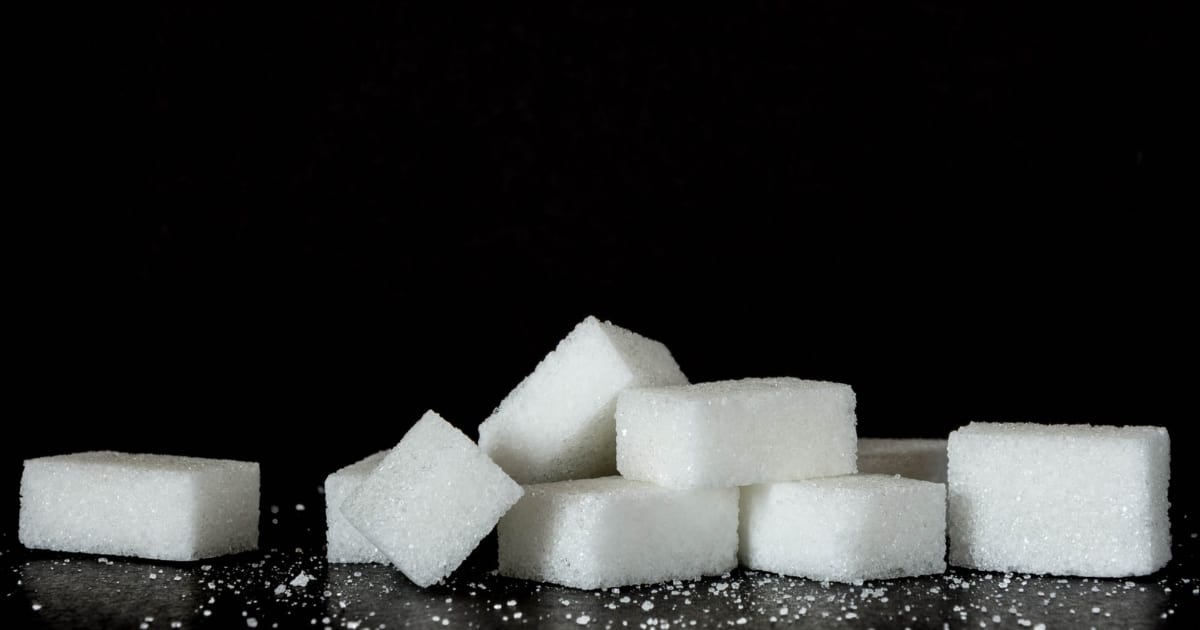The sweet taste of sugar from ice cream, candy, cola, and even breakfast cereals seems to dance on the tongue, oftentimes leaving one craving more.
Studies have found that sugar is addictive, and people who are addicted to sugar even experience withdrawal symptoms such as depression and mood swings when they try to cut it out of their diets completely.
This can be problematic for people with diabetes, who by definition cannot properly metabolize sugar and must manage their cravings for optimum blood sugar control.
This article will outline the ways to stop your sugar cravings and kick the habit for good!

Why is sugar addictive?
Many people simply wonder why sugar is addictive. Certainly, not many people report an addiction to broccoli, so there has to be a reason! That reason is found in the chemical release of hormones in our brain when we eat sugar.
With every sweet bite, dopamine is released from our brain into our bodies. This is the link between added sugar and addictive behavior that is also found in substances such as alcohol, cigarettes, and illegal drugs.
The neurotransmitter dopamine is part of the “reward circuit” in the brain that’s associated with addictive behavior. The “high” one feels from eating sugar (and the extra release of dopamine) makes one addicted to said behavior (eating sugar), creating a vicious cycle.
As you repeat the behavior more often (ice cream after dinner every night, for example) your body adjusts to release less dopamine over time. The only way to feel the same “high” as before is to increase the release of dopamine, which in this case means to eat more and more sugar.
These same behaviors are found in people with drug and alcohol dependencies, but for sugar, the ingredient is much more accessible, available, and socially acceptable than illegal drugs, making it also much harder to avoid in everyday life.
According to the American Heart Association, 8 out of 10 adults are trying to lower their sugar intake.
On average, an average adult in the U.S. consumes around 77 grams of sugar a day, or about 60 pounds of sugar per year!
Why is sugar so problematic?
This wouldn’t be a big issue if sugar wasn’t so bad for your health. More and more information is coming out every year about just how dangerous sugar is for our minds and bodies.
In addition to contributing to poor blood sugars in people with diabetes, increased sugar intake, over time, also contributes to the development of prediabetes and type 2 diabetes in people without existing diabetes, and the development of dental cavities, higher blood pressure, heart disease, whole-body inflammation, dementia, weight gain, fatty liver disease, and even cancer in the entire population.
How much sugar is okay?
If sugar is so bad for you, then is any amount of it okay? Sugar is not a required nutrient in the diet (except, of course, for treating hypoglycemia for people with diabetes).
The Institute of Medicine, which sets the Recommended Dietary Allowances, has not issued a formal number for recommended or allowable grams of sugar per day one should consume.
The American Heart Association, however, suggests that the average man consumes no more than about 9 teaspoons of added sugar per day, and the average woman consumes no more than 6 teaspoons per day. That is about the amount in a 12-ounce can of soda.
Natural sugars, like those found in fruits and dairy milk, do not count. The focus is on “added sugar”, found primarily in things like ice cream, candy, cakes, cookies, regular sodas, and other ultra-processed foods.
How to kick the sugar habit & stop cravings
Stopping your sugar cravings can be quite difficult once you’re addicted, but these proven tips will help you along the way.
Don’t mistake tiredness, boredom, or anxiety for hunger
People eat (and eat sugar!) for a variety of reasons, but it’s not always hunger that drives their decisions.
If you’re tired, you should rest. If you’re bored, you should find something to do with your hands other than snack on sugar, like knit, read a book, or go on a bike ride.
If you’re struggling with anxiety, try some deep breathing, meditation, or yoga to calm your nerves instead of a candy bar laden with sugar.
Drink plain water
What we often mistake for hunger is actually thirst! And the number one source of added sugars in the American diet is soda, energy, and sports drinks.
The easiest swap to help curb your sugar cravings is to cut out added sugars in your drinks completely and opt for plain water!
If you are having trouble with plain water, add a sliced lime or lemon to mix it up, or try seltzer water.
If you’re truly hungry, eat a healthy & filling meal
If you really are needing energy and calories, instead of snacking on a cookie, reach for a protein-packed snack like a hardboiled egg, celery and all-natural peanut butter, or an apple with some cheese.
Make sure you’re not starving yourself of good nutrition throughout the day; when you’re eating a healthy balance of macronutrients, most cravings will naturally fall away.
Opting for protein and fat instead of added sugar will keep you satiated longer without the need to fill up on empty calories and sugar, and it’s much better for your blood sugars!
Remove the temptation
You can’t eat what you don’t buy, so when grocery shopping, do not buy sweets and treats that have added sugar! Stock up your cart with healthy fruits, vegetables, lean proteins, and dairy.
If you need something sweet, indulge in seasonal delights like watermelon, cherries, or berries that have a lot of flavor but also contain many crucial vitamins, minerals, and fiber for a healthy diet.
Pro tip: never go grocery shopping hungry, as you’re more likely to buy foods you crave (i.e. sugary sweets) and not the healthy foods you need.
Distract yourself
Pick up the phone and call a friend, write some poetry, take a hot shower, or get your hands dirty in the garden!
Cravings come and go, so after about 20 minutes of distracting yourself, you’ll be pleasantly surprised to notice that your sugar cravings have largely passed.
If you’re still hungry, use that as a signal that it’s time to eat some real food.
Exercise
Exercise releases healthy endorphins, which are the “feel good” chemical in the brain. They also largely combat cravings.
Getting out of your house for a quick 20-minute walk, run, or bike ride will not only distract you from your cravings, but it will also make you just feel better in general.
Get better sleep
Our bodies crave carbohydrates and sugar when we’re tired, to compensate for lack of sleep. Getting a solid 7-9 hours of sleep per night, without distractions, can help to combat sugar cravings and help you stay on track.
Studies have found that heavy sleepers actually reduce their sugar intake by up to 10 grams per day, which over time can lead to very healthy results!
Go cold turkey!
If you’re truly addicted to sugar, you’ll need to completely remove it from your diet for about 21 days. It takes about 21 days for a new habit to stick, and three weeks without any added sugar is usually enough to break the dopamine cycle of your cravings.
If three weeks is overwhelming, take a two-week break from sugar to reset your taste buds. Limit yourself to foods that have little to no added sugars, and always aim for fewer than 5 grams of sugar per serving.
Conclusion
Eating a sweet treat that contains added sugar now and then is fine, but as more research is being released, people are learning the true dangers of sugar and sugar addiction.
Cutting out cravings can be difficult, but with these tips, kicking the habit is attainable, and will lead to better outcomes not only for your diabetes, but for your brain, heart, teeth, liver, waistline, and overall health as well!




Carrie Martin
Hello, Newly diagnosed here. I have also have hypothyroidism for 31 years, that happened to go into hyperthyroidism which caused a bunch of weight loss. I weigh 101 trying to put some weight back on. Trying to muscle up I guess. I miss my cardio. I really appreciate your wisdom and sharing your personal info.! Gas and feeling the rumbles in my stomach at night is major issue. I have been eliminating food like you say. Hoping I can still get some meat on my bones.
All the best.!
Carrie
Kathy Rolland
I am so sorry you did not address foods made with artificial sweeteners in this article. I feel that I am addicted to ANY sweets, even those that are labeled, “sugar free.” Can artificial sweeteners have the same effect as sugar?